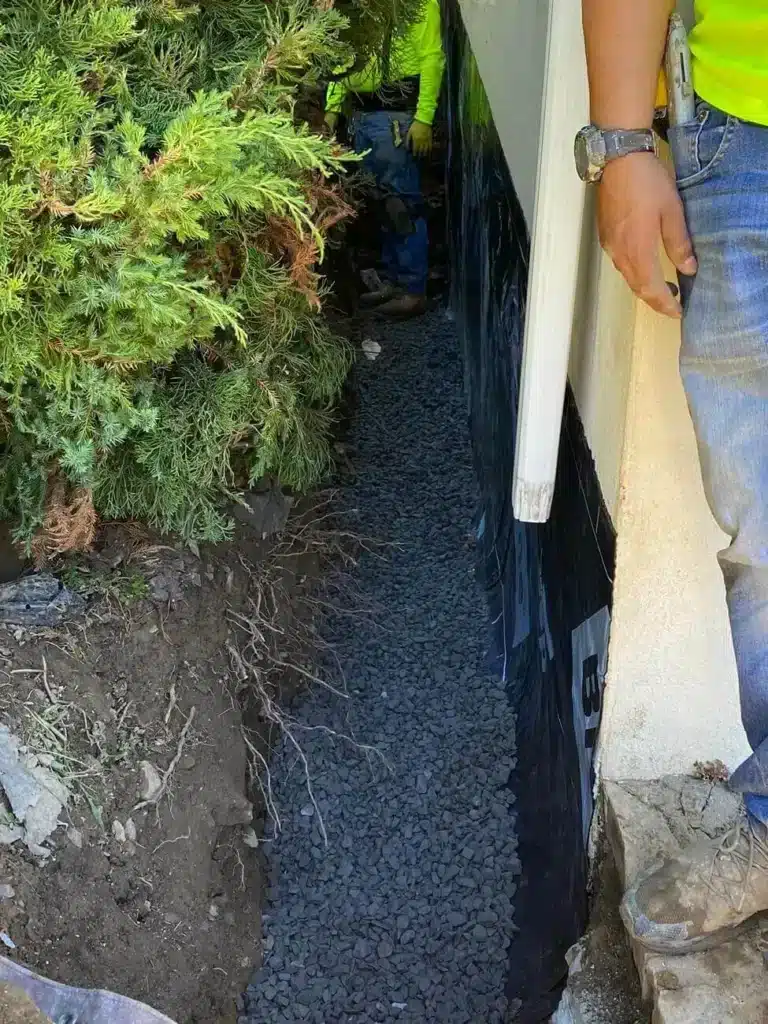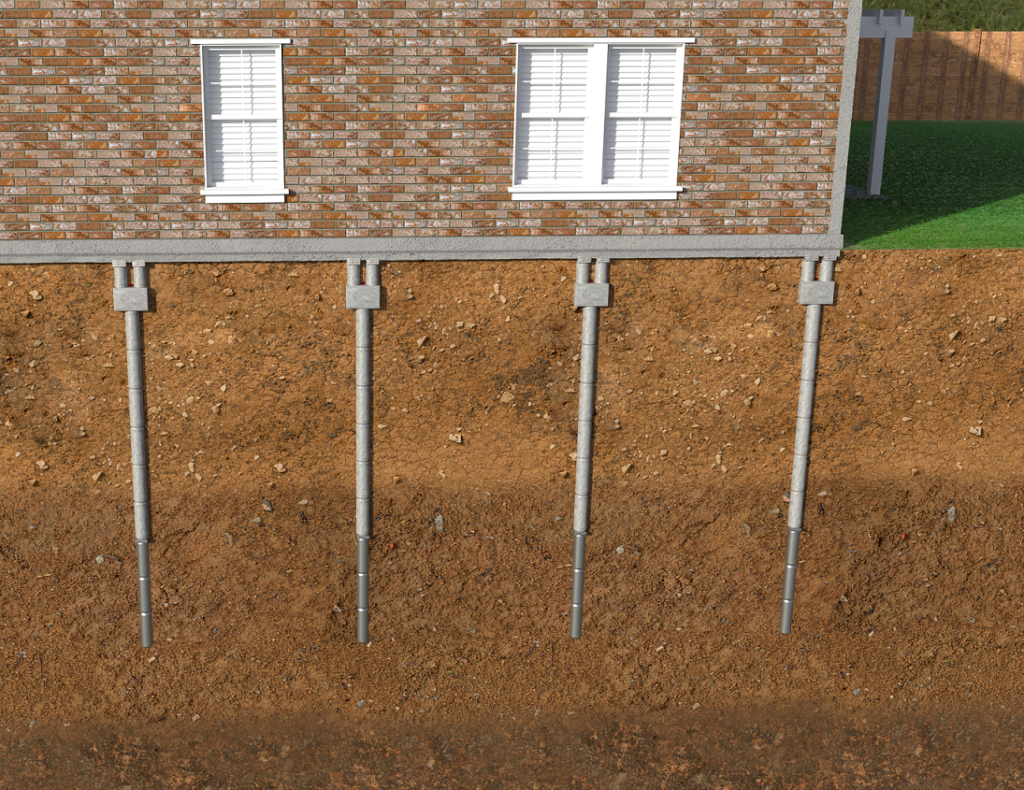Checking Out Different Approaches of Foundation Repair Work for Numerous Dirt Types
Foundation repair work is a vital element of maintaining architectural stability, especially when taking into consideration the varied difficulties postured by various dirt types. The intricacy of soil behavior under differing problems demands a customized approach to repair, making certain ideal solutions such as helical piers for unsteady soils or chemical grouts for cohesive layers. Nonetheless, the concern continues to be: exactly how do we determine one of the most effective approach for every unique circumstance? Comprehending the interaction in between soil attributes and repair service methods is crucial, yet there is more to reveal in the quest for sustainable remedies. What elements genuinely dictate the selection of method?
Understanding Soil Kinds
Soil kinds play an essential role in the security and longevity of building foundations, making it important for homeowners and building specialists to comprehend their qualities and habits. The communication in between dirt and structure can figure out the architectural stability of a building. There are several soil kinds, each with distinctive physical residential properties that affect just how foundations are designed and preserved.
Granular soils, such as sand and gravel, provide great drain and are often taken into consideration stable. They have high load-bearing abilities, which can sustain much heavier frameworks. These dirts can move if not compacted properly, leading to prospective settlement issues. In contrast, natural soils like clays and silts exhibit various behaviors. These soils often tend to retain dampness, and their load-bearing ability can differ significantly with adjustments in moisture material.
Rocky dirts, understood for their toughness and security, offer excellent support for foundations yet might need specific devices for excavation. Alternatively, fertile soils, which are a balanced mix of sand, clay, and silt, frequently give beneficial problems for foundation support because of their moderate drainage homes.

Comprehending these dirt types is vital for selecting appropriate foundation repair service techniques, making certain the durability and security of structures over time.
Challenges With Large Clay
Amongst the numerous dirt kinds, large clay offers unique obstacles for foundation stability because of its tendency to undertake considerable volume changes with wetness variant. This sort of dirt swells when wet and agreements when dry, which can exert significant stress on frameworks. These changes can bring about structure breaking, heaving, and settlement problems, presenting substantial risks to the structural honesty of buildings.
The obstacles with extensive clay are aggravated by its plasticity index, which gauges the dirt's capacity to change shape and quantity. A high plasticity index indicates higher possibility for motion, enhancing the likelihood of damages to foundations. This is specifically troublesome in regions experiencing constant or extreme weather condition adjustments, where cycles of wet and dry conditions prevail.
Additionally, the depth of extensive clay layers can vary, making complex the evaluation and preparation of appropriate foundation repair work methods. These complexities call for an extensive geotechnical assessment to make certain efficient structure repair service approaches are executed, stressing the value of resolving large clay challenges with competence and treatment.
Solutions for Sandy Soils
Sandy dirts, identified by their large fragment size and low communication, present unique challenges for structure stability due to their tendency for shifting and disintegration. By securing the structure to much deeper, much more secure soil layers, these systems can official site supply the required assistance to combat the shifting nature of sandy dirts.
Another suggested approach is the application of soil stablizing approaches. Chemical grouting, for circumstances, involves injecting a maintaining agent right into the soil, which enhances cohesion and minimizes permeability. This process aids to solidify the sandy substratum, consequently minimizing the danger of disintegration and movement.
Additionally, mounting correct drainage systems is critical in sandy soil problems. Ensuring sufficient drainage can protect against water build-up around the structure, which commonly intensifies disintegration and dirt variation. Techniques such as French drains or surface grading can be utilized to route water away from the building boundary.
Resolving Settling in Loamy Soils
Loamy soils, known for their balanced mix of sand, clay, and silt, use an abundant base for several frameworks yet can often lead to foundation settling due to their distinct structure. This balanced texture offers excellent drainage and nutrient retention, making it optimal for agriculture and landscaping. This very same attribute can end up being troublesome for structures, as changes in wetness material can cause the soil to increase or agreement, leading to resolving.
Addressing resolving in fertile soils calls for a complex method. Exact dirt testing is critical to figure out the particular make-up and moisture content of the loam. Once data is collected, executing proper water drainage services is vital to maintain regular moisture degrees, thereby lowering the danger of dirt contraction or development. French drains or surface area grading work read what he said approaches to reroute water far from the structure.

Ingenious Repair Techniques
In the world of foundation repair, cutting-edge methods are continually being created to attend to the facility challenges posed by numerous soil problems. As soil kinds differ substantially in their structural homes, conventional approaches may not always are adequate. The advent of brand-new technologies in structure repair work provides a lot more tailored options, making sure stability and long life.
One remarkable development is making use of helical piers, which are especially reliable in expansive or unsteady dirts (foundation repair oklahoma city). These piers are screwed right into the ground until they get to a secure layer of soil, supplying strong support for the structure over. This method lessens interruption and is adaptable to different soil kinds, making it a versatile service
An additional cutting-edge strategy is the application of polyurethane foam injection. This technique entails injecting high-density polyurethane foam below the foundation to fill up gaps and support the structure. It is a much less invasive option to typical foundation, using fast installment with minimal disturbance to the surrounding location.
In addition, soil stablizing techniques, such as making use of chemical grouts, have obtained grip. These substances enhance soil strength and decrease permeability, protecting against future moving. Collectively, these ingenious fixing strategies give reliable solutions for the diverse obstacles posed by differing dirt problems.
Verdict

Structure repair work is an important facet of maintaining architectural integrity, specifically when thinking about the varied difficulties presented by different soil types (foundation repair oklahoma city ok). The intricacy of dirt behavior under differing conditions demands a customized method to repair, guaranteeing optimum options such as helical piers for unsteady soils or chemical grouts for natural layers. By securing the foundation to deeper, extra steady soil layers, these systems can supply the required assistance to neutralize the moving nature of sandy soils
Structure fixing requires mindful consideration of dirt kinds to ensure stability and longevity. go Chemical grouts boost dirt strength and reduce leaks in the structure in cohesive soils.
Comments on “The Ultimate Solutions for Foundation Repair Oklahoma City: Expert Insights”